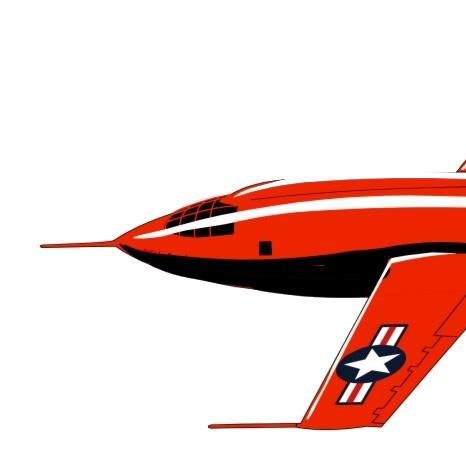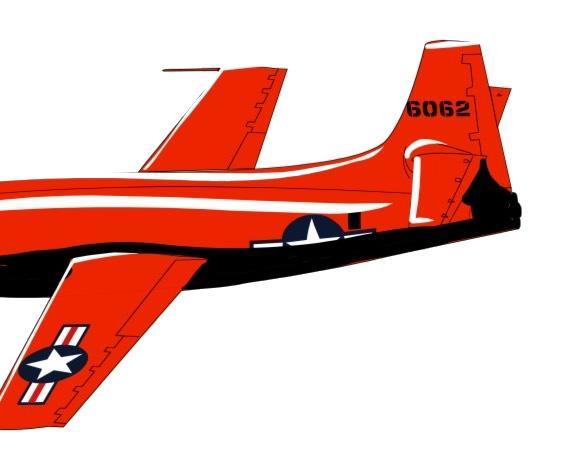
7 minute read
PJ’s PERSPECTIVE
Breaking the Imagination Barrier
PJ Kleffner, DTM - District Director
Advertisement
If you get a group of people together, some are nonchalantly satisfied with the way things are, but others actively resist any change – don’t rock the boat, don’t go looking for trouble. Others aren’t satisfied with the status quo – they have a vision, a dream, the imagination that leads to breakthroughs in technology. They also scare the daylights out of those other two kinds of people.
When automobiles began to gain popularity around the turn of the 20th century, many people believed that human beings were on the path to self-destruction – that our ever-increasing desire for speed would be the death of us. Some of those people thought that a car would never go faster than 60 miles per hour. There was a psychological barrier in their minds that resisted the idea of traveling faster than a mile per minute. We cruise down the highways now well in excess of 60 mph, and think nothing of it.
Many decades later, Chuck Yeager faced the same limited kind of thinking when he attempted to break the sound barrier. However, the skeptics in the 1940’s were not just farmers - they were highly educated engineers and scientists.In hindsight, why did we fear that limit of 60 mph? After all, human beings arbitrarily divided an hour into sixty minutes.
However, this new limit – the speed of sound – was a natural phenomenon, a law of physics that we dare not try to break. Aeronautical engineers were well aware of the principles of flight. In their simplest form, wings are curved on top and flat on the bottom. This means the length of the top surface is longer than the length of the bottom surface. As air splits at the front edge of a wing, it must spread out more to cover the longer
distance on top of the wing. As it spreads, the air on top is thinner and has less pressure, so the stronger pressure on the bottom pushes the wing up. Do this fast enough to overcome gravity and you are flying. If you slow down too much, the aircraft stalls, which is the technical term for “drops like a rock,” instead of glides like a plane.
These engineers also knew that cutting through the air like this disturbed it, and created shock waves similar to the wake you see behind a boat in water. As speeds increased, these shock waves were strong enough in some cases to literally shake the plane apart, or make the pilot lose control, both leading to disaster. Many of these engineers believed there was a natural barrier at the speed of sound, and any attempt to
penetrate it would cause the plane to disintegrate. Air superiority already proved itself to be a factor in winning wars, so the US invested
heavily in pushing the performance envelope. One goal was to fly faster than the speed of sound – break the sound barrier. Bell was awarded the contract to design and build the X-1 experimental aircraft.
Chuck Yeager was selected as the head test pilot for a number of reasons. Most of the other military test pilots were collegeeducated engineers, but Chuck was a farm boy who barely made it through high school. However, his experience as a topnotch fighter pilot during WWII, and years of tinkering with farm equipment, helped him do things with those airplanes that the others never dreamed possible. Another important factor was his lack of education in physics, because he didn’t know enough to be afraid when they asked for volunteers. You might say there were no “facts” to interfere with his imagination.
The speed of sound is designated Mach 1, named after Ernest Mach, the Austrian physicist who measured it in the 1800s. Depending on atmospheric conditions like temperature and humidity, Mach 1 is approximately 767 MPH. Bell pilots had taken the X-1 to 0.8 Mach before Chuck Yeager took over, and the goal was to reach Mach 1.1. Progress was slow, because there was so much fear of what would happen at Mach 1. The goal for each flight was to increase the speed by a mere .02 Mach.
The X-1 was more like a rocket than a plane, and was not designed for normal take-offs. They hauled it up to 25,000 feet in a B-29, and dropped it out the bomb bay doors. The first few times, they didn’t load the X-1 with fuel, and just let Chuck glide back to earth getting a feel for how the aircraft handled.
All went well until the first powered flight. The B-29 pilot was supposed to go into a dive to pick up speed so the X-1 wouldn’t stall before Chuck could get the rockets fired. The dive was too shallow, so they didn’t pick up enough speed

for the now loaded and heavier X-1. When they released him, the X-1 dropped like a rock and lost way too much altitude before Chuck finally got the nose pointed down and picked up enough speed so he could control it. He then fired the rockets, took it up to 45,000 feet and .82 Mach, as planned. He turned off the rockets and was supposed to jettison the remaining fuel before gliding in for a no-power landing. However, the fighter pilot in him had to show off a little, so he went into a high-speed dive, lined up over the main runway and re-lit the rockets as he passed the control tower -- kind of like the “fly by” scene in Top Gun. He went straight up and hit .85 Mach at 35,000 feet. That little stunt nearly cost him his job and risked termination of the entire program.
After many harrowing flights and problems with shock waves, they were up to .95 Mach. October 14, 1947 was looking to be a pretty routine day, except for the fact that Chuck broke some ribs falling off his horse a couple days before. He taped up his ribs so they didn’t hurt so much when he breathed. He also smuggled a sawed-off broom handle aboard to push the door latch closed, because it hurt too much to reach up and do it, and he certainly wasn’t going to tell his boss about the broken ribs.
The goal for that day was .97 Mach. The B-29 pilot dropped him too slow again, so he had to wrestle the controls to recover from a stall. That didn’t do his ribs much good, but he gained control, fired the rockets and climbed to 42,000 feet, reaching .92 Mach in the process. He continued to accelerate as he leveled off, and the ride was smooth as glass. At .965 Mach, the needle started to fluctuate wildly, and then pegged off scale. Chuck radioed the engineer in the B-29 and told him something was wrong with the Mach meter. It remained pegged for about twenty seconds, then he shut down the rockets and headed for home. Meanwhile, the guys in the tracking van on the ground heard the first sonic boom ever generated by an airplane, and recorded his speed at Mach 1.07. They learned later that a small shock wave was interfering with the airspeed gauge on the wing.
After all the anticipation, punching a hole in the sound barrier was no big deal! Chuck went on to fly a later model X-1 at Mach 2.35 and over 90,000 feet high. One of the modifications they had to make was a new Mach meter. Believe it or not, the meter in the first X-1 only went to Mach 1. That didn’t show much imagination or confidence in the plane that was designed to break the sound barrier.
My grandfather used to say, “Some people get in their own way.” Do you ever do that? Do you limit yourself because you don’t have the self-confidence or imagination to try something new? Walt Disney said, “If you can dream it, you can do it.” If your dream seems too big or scary, remember that the path to Mach 1 was done in .02 steps. No matter how big your dream is, you will never achieve it until you take that first step. I challenge you to break your own imagination barrier and soar to greater heights than you ever thought possible.










